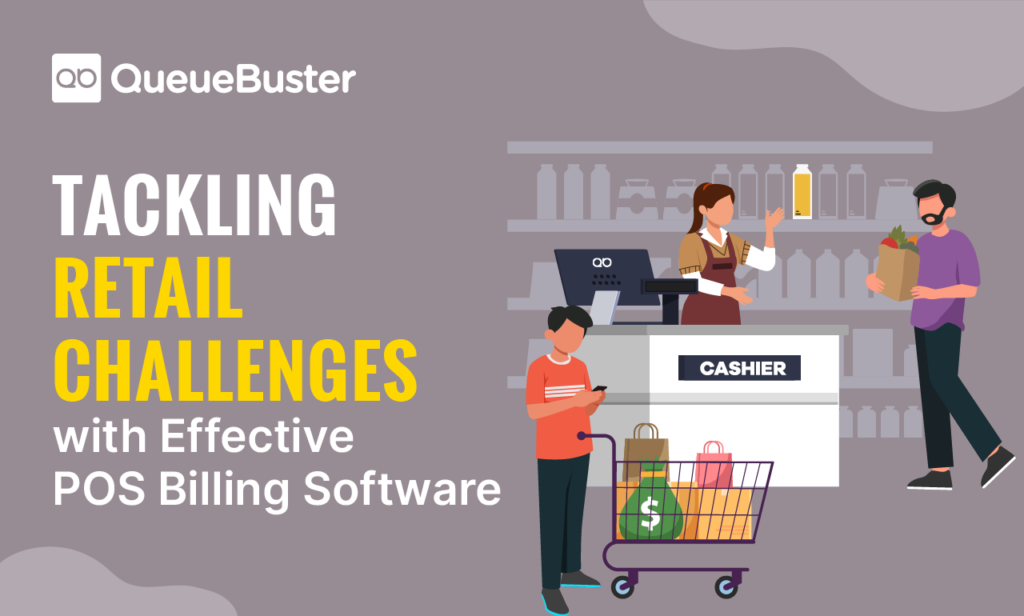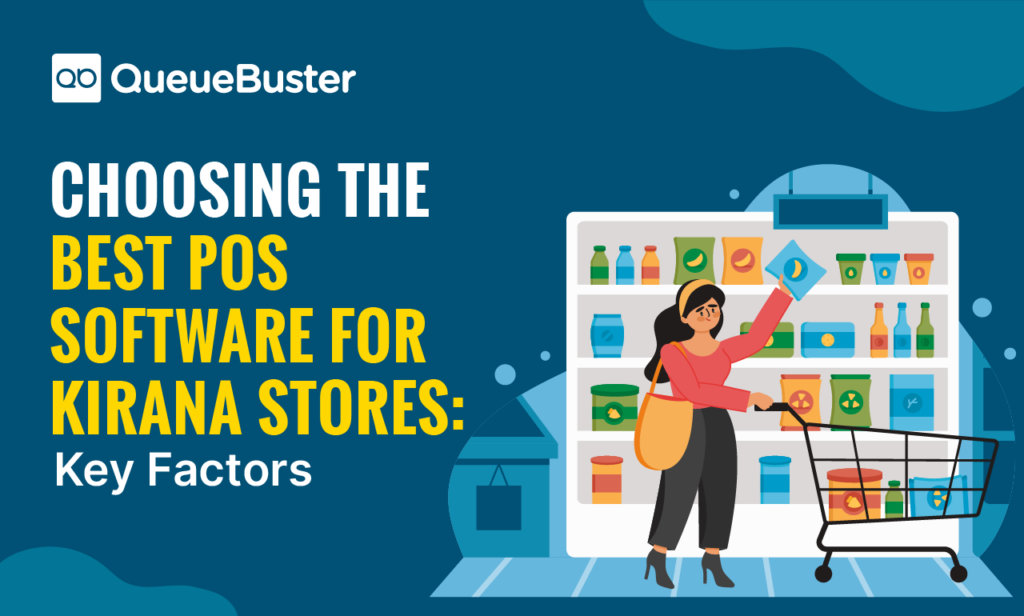5 Ways To Clear Your Retail Stock Before It Expires

5 Ways To Clear Your Retail Stock Before It Expires

By QueueBuster Published: February 13th, 2023
On the list of no-nos for businesses, having an excessive amount of inventory is at the top. In addition to occupying valuable shelf space, excess stock ties up capital and can prevent one from reinvesting in the company or purchasing items that they genuinely need.
That is why it is crucial to routinely pay attention to the sales and inventory data. However, every year, even the most prosperous e-commerce businesses struggle to move lower-demand items off of their shelves. This could be due to a number of factors, including a lack of demand, inaccurate forecasts, and poor customer communication. Unexpected situations might also affect enterprises, leading to significant inventory challenges. In either case, having too much inventory can be a major concern for organizations as it can hold cash and make logistics a headache for businesses.
Early in the year and at the end of seasons when new products are in demand are frequent times when sales are usually slow. The best course of action is to identify ways to liquidate inventory as quickly as one can rather than holding onto these products in the hope that someone will suddenly decide to buy them. Use this guide’s methods, and tips to instantly liquidate inventory.
Causes Of Excess Inventory
When supply levels for a product increase anticipated demand in an uncontrolled way, excess inventory occurs. It is inefficient to carry extra inventory, and doing so has operational and financial losses. These include holding up cash that is desperately needed, rising carrying costs, and the possibility of stock obsolescence. Here are a few reasons why businesses may have too much inventory:
1. Inaccurate demand projections is the most common reason for excess inventory. Lack of the appropriate tools for the business frequently results in inaccurate inventory forecasting. Utilizing statistics and data, POS systems like QueueBuster help assist businesses in properly forecasting product demand.
2. Every product goes through a life cycle, starting with the market launch and ending with a decline. The demand for a product will fluctuate at each stage, stabilize at maturity, and then frequently become irregular and begin to diminish when the product enters decline. The product life cycle is sometimes overlooked by inventory managers when forecasting inventory. This is particularly dangerous as sometimes demand declines and results in excess retail stock.
3. It is easy to become happy with obtaining the lowest price possible for each order. Bulk purchasing is one way to achieve this. Sometimes, despite there not necessarily being a demand for them, a full warehouse results from a great cost-per-unit price that is too much to resist. As a result of this, the business ends up with surplus inventory.
A POS system like QueueBuster helps with demand forecasting, inventory management, and other tasks. It accurately forecasts inventories by effectively managing data, product data, client orders, and more.
5 Ways To Liquidate Inventory
Here are 5 easy ways to liquidate the inventory and get rid of excess retail stock:
1. Discounts
Offering sales and discounts is one of the best ways to liquidate inventory. This strategy works best when trying to increase demand for goods that might become out-of-season or are close to expiry. Along with this, businesses might use flash sale techniques to add a sense of urgency to the offer. Businesses must be careful not to overuse this promotional strategy, as overuse might cause the products to lose their effectiveness and worth over time.
Sales and discounts usually draw new clients to a business. To generate sufficient profits in the future, a business must work to turn these bargain customers into long-term clients. A typical strategy for accomplishing this is to provide excellent customer service and constant communication throughout the purchasing process.
2. Using Liquidation Companies
Businesses can sell their excess retail stock to liquidation companies for a big discount. These businesses are usually very specific about the goods they purchase and the product price they would accept. The prices provided might not be as high as anticipated, even though this strategy can quickly liquidate inventories. It is advised to look for nearby liquidation companies that provide this special service. Comparing the rates they are ready to pay for the excess retail stock can help the business earn more money.
3. Bundling
Bundling is the practice of selling a combo of goods at a discounted rate compared to their individual prices. Businesses frequently offer combos or bundles that combine excess inventory with in-demand goods, which helps in liquidating inventories. If a customer receives an item they desire along with a discounted item, they are likely to consider this to be a good deal.
Attempting to bundle things that can be utilized together or are related to one another can help to improve this promotional strategy. Even though this is a very situational occurrence, it should always be taken into account. Businesses might use the strategy of bundling numerous units of a single product at a heavy discount. This facilitates the quicker liquidation of a specific product. This is a good strategy if the provided item requires a lot of storage space and depreciates quickly.
4. Donating
Donating excessive retail stock can be an excellent PR opportunity. Businesses that want to improve the image of their brand and liquidate inventory can donate goods to charity and local NGOs. Along with increasing revenue, improving the brand image has many other advantages. Customers may grow reliant on your company and be less price sensitive. It also creates prospects for future collaborations. Additionally, it may boost customer retention and the likelihood of recommendations from existing customers. Businesses can eventually recover their financial losses from donations if they take advantage of the PR opportunity.
5. Re-Marketing
When particular products aren’t selling, it can be annoying for any business. The product itself, though, might not be the problem. Customers’ perceptions of the product could be harmed by marketing or product positioning. Rearranging the product inside the store might solve the issue of liquidating inventory for a physical store. Refreshing the display could help revive products that shoppers may have forgotten or never noticed.
To make the product look more eye-catching, the online business could update the product image on the website. It’s also essential to think about where the product fits into the market. A once high-end product may have reduced in popularity due to its seasonality. Therefore, remarketing and repositioning products might aid businesses in liquidating inventory and retail stock.
Tips To Reduce Excess Inventory and Liquidate Inventory
When talking about excess inventory, have the following points and tips in mind:
- The business relies on its cash flow to survive. It is preferable to sell a product at a very low profit margin or even at a loss as opposed to keeping it on the shelf.
- Typically, inventory should be sold between 90 to 120 days. It’s time to make plans to get rid of items if they haven’t sold in this period of inventory time.
- Use POS systems like QueueBuster to manage inventory needs, accurately forecast product demand, and more.
When getting rid of excess goods, businesses need to put the idea of profit out of their minds. From a financial perspective, it’s all about damage reduction. However, POS systems may have been used to stop the damage.
Businesses may manage their accounting, cash flow, inventory needs, clients, and more with the aid of QueueBuster. It is one of the most used POS applications in the market. In addition to offering cloud backup, offline software mode, bulk data management, and hundreds of programme connectors, it is also reasonably priced and trustworthy.
What else are you waiting for? Schedule a demo right away on the QueueBuster website to start your 30-day trial, just like our other happy 50000+ clients.
Popular Posts

Overcoming Small Challenges With Retail POS Billing Software
Running a small retail operation without Point-of-Sale System is no easy task. […]

Key Considerations While Choosing POS Software for Kirana Stores
As a kirana store owner, you may be finding yourself standing at […]